This is a profile of Nancy Staub, the founder of the Worlds of Puppetry Museum at the Center for Puppetry Arts in Atlanta, Georgia. The article traces her contributions to world puppetry from the 1950s to the present day. As a performer, director, producer, researcher, and collector, she has collaborated with international puppet artists (including Jim Henson) and scholars to bring awareness of puppet theatre to a wider audience. The article includes a selected bibliography of her publications.
Bradford Clark is a professor in the Department of Theatre and Film at Bowling Green State University, Bowling Green, Ohio, where he teaches courses related to design and puppetry. He has served on the UNIMA-USA board as well as The Henson Foundation, and he was the curator of the 2015 expansion of the Worlds of Puppetry Museum at the Center for Puppetry Arts, Atlanta, Georgia.
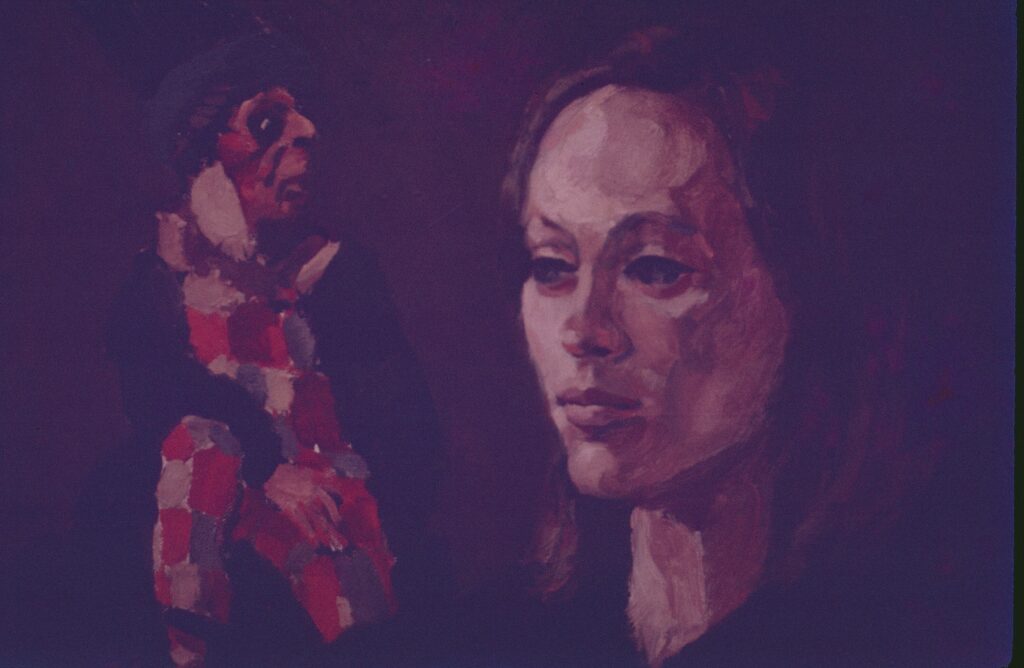
Nancy Lohman Staub has been a champion of puppet theatre for most of her life. As an author, researcher, producer, promoter, director, performer, collector, and curator, she has raised public consciousness on all aspects of puppetry and has been pivotal to introducing puppet theatre to a wider public than might otherwise have had access to the art form in all its richness.
International travel first set her on the path to exploring puppetry. While attending London’s Royal Academy of Dramatic Arts in the 1950s, Nancy saw a performance of Sergei Obraztsov’s An Unusual Concert, which “… opened my eyes to the incredible potential of puppetry.” (Puppetry International 40) Her lifelong love of puppetry led her to join UNIMA-USA as a charter member in 1966. She met Obraztsov personally for the first time in 1971, when he attended an UNIMA meeting at a Puppeteers of America Festival in Nashville, and she helped arrange an opportunity for him to perform his solo show. This was the first time many attendees had any contact with Russian artists at all (PI 40). It is hard to imagine how difficult it was at the time for Americans to be aware, even minimally, of puppetry from outside the US, let alone from countries with which the US had political differences. As an international organization with one clear purpose, to create international understanding through the art of puppetry, UNIMA was the perfect place for Nancy to make connections both for herself and for others, leading to friendships that have lasted decades.
UNIMA-USA opens doors for its members to the international community of puppeteers, many of whom become close friends. Publications, festivals and meetings bring people together to share their love of puppetry and to open their hearts to the message of peace and understanding through the art form. It certainly did that for me. (PI 40)
Nancy’s international network affords her the remarkable ability to obtain the most obscure piece of knowledge about puppetry by knowing exactly whom to contact or to whom to send an email. Her correspondents are uniformly delighted to hear from her and always respond warmly.

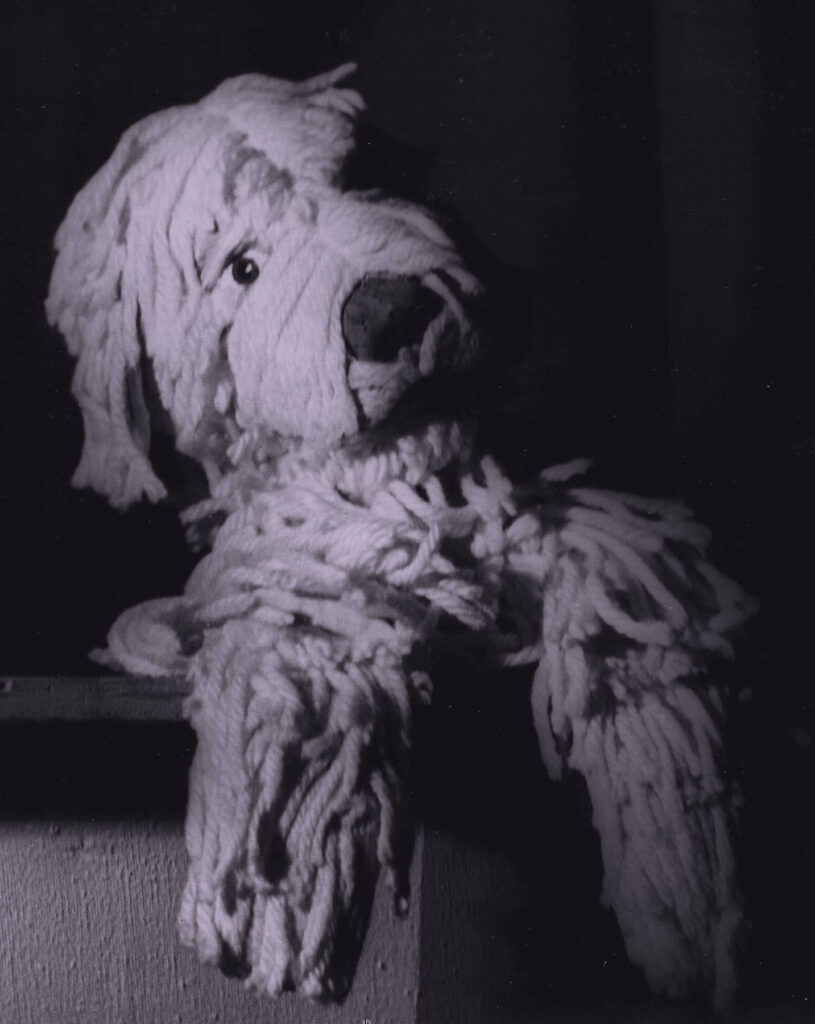
A New Orleans native, Nancy, along with Sidney Kittinger, founded the Pixie Players (later the Punchinello Playhouse) in 1954. After producing puppet shows at Gallery Circle Theater and Le Petit Théâtre, she established the Puppet Playhouse (also in New Orleans) in 1969 and ran it for ten years. She toured performances for the New Orleans Recreation Department and to libraries and schools. Nancy created several productions with the New Orleans Symphony. Two of them, Babar the Elephant and The Tale of Peter Rabbit, were presented at the John F. Kennedy Center for the Performing Arts during her tenure as an associate producer in their Theatre for Young Audiences program (Jurkowski 656).
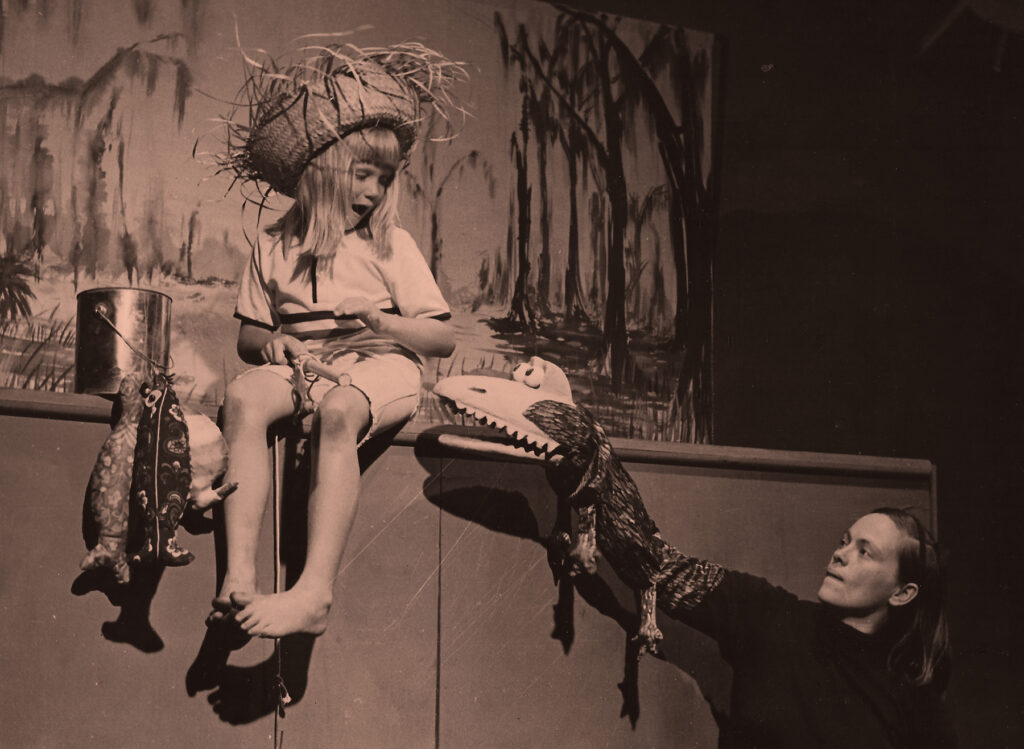


Nancy’s college and graduate work expanded the scholarly background she brought to puppetry. She received a BA in Philosophy from Tulane University in 1960 and an MA in Asian Theatre and puppetry from the University of Hawaii in 1990 at the age of fifty-six. Her studies gave her a scholarly foundation and knowledge of Asian performance, generally, and the historical and religious foundations essential for understanding so much traditional Asian puppetry. Extensive travel and professional training with major theatre artists in London, Paris, and New York have expanded the professional and international perspectives informing all her endeavors.
The 1980 World Puppetry Festival
In 1974, Nancy directed the National Puppeteers of America (PofA) Festival in New Orleans, previously having had limited experience with festival organizing because of the demands of raising a family (Louis). In 1975, when Jim Henson, then president of UNIMA-USA, arranged a meeting at the Detroit Institute of the Arts for those interested in puppetry, Nancy joined as the PofA representative. At that meeting, Henson proposed hosting the 1980 UNIMA 13th Congress in the US, hoping to give Americans the then-rare opportunity to experience the richness of professional puppetry from outside of the United States. As a result of Henson’s suggestion, UNIMA-USA’s council members, joined by Nancy, traveled to the 1976 UNIMA Congress in Moscow, where they successfully bid to host the 1980 Congress in Washington, DC. Upon her return to New Orleans, Nancy studied grantsmanship and subsequently, at Henson’s invitation, became the Executive Director of the 1980 World Puppetry Festival at the John F. Kennedy Center in Washington, DC. The Festival accompanied the first International UNIMA Congress held outside of Europe. From June 8 to 15, 1980, fifty performances took place in ten different venues in DC. In 2014, Nancy wrote extensively about the experience in “Once in a Lifetime” in Puppetry Journal 65. Her article documents the complexity of obtaining grant funding and establishing co-production relationships, producing the international performance events, the various political tensions that, somehow, did not derail performances, and the performances by both established and early career artists such Bruce D. Schwartz and Julie Taymor. She persuaded the Smithsonian Institution’s Folklife department to present examples of traditional puppetry from Asia and Africa on the mall and in their museums. To further widen public awareness of puppetry arts, Henson persuaded WQED television station of Pittsburgh to produce a one-hour documentary for PBS, Here Come the Puppets, estimated to have been seen internationally by ten million viewers. WQED’s additional performance footage found a home in the New York Public Library for the Performing Arts at Lincoln Center. Jim Henson Presents The World of Puppetry, a series of one-hour documentaries in which Henson interviewed and introduced the work of important puppeteers from around the globe, was inspired by an unrealized festival project and drew upon that documentation. As a result of the efforts that took place behind the scenes of the festival, Nancy observes that official recognition of puppetry in National Endowment for the Arts (NEA) funding guidelines as a distinct art form has led to wider funding for puppetry organizations, companies, and individual artists (PJ 65).
In conjunction with the festival, Nancy organized the Corcoran Gallery exhibit, Puppets: Art and Entertainment, which subsequently toured to eleven additional venues across the United States and was seen by about three million attendees. It is important to note that very few such comprehensive puppetry exhibitions had been mounted in the past, let alone toured to the kinds of venues that could lead to so many viewers. The exhibit was an important complement to the performances, providing further education and additional ways to appreciate the depth of the form.
Nancy’s friendship with Henson was one based on mutual love for sophisticated puppetry and mutual respect. Over lunch one day, Henson asked for her opinion as to how best to give back to puppetry. Her suggestion led to Jim and Jane Henson’s establishment of what is now the Jim Henson Foundation, incorporated in 1982, which has since provided invaluable financial support for presentations, festivals, and production grants in New York City and across the United States. The first grantees included Julie Taymor, Janie Geiser, the Sandglass Theater, run by Eric Bass and Ines Zeller, and the Underground Railway Theater, co-founded by Wes Sanders and Debra Wise (PJ 66). With the support of the Foundation, today under the leadership of Jim Henson’s daughter, Cheryl Henson, numerous innovative, cutting-edge works by both emerging artists and well-established performers and companies have come to fruition. Starting in 1992, the Foundation also produced five Henson International Festivals of Puppet Theater, with Leslee Asch as Producing Director and Cheryl Henson as Executive Director. Continuing her commitment to supplementing performances with other artistic and educational experiences of puppetry, Nancy curated the 1992 accompanying exhibition Breaking Boundaries: American Puppetry in the 1980s. She also served as a key consultant (and later participant) during conceptualization of the festival’s 1992 “Theatrical Inanimate” conference, which brought together artists, critics, scholars, and journalists (who largely shape public perception of puppetry as an art form) to discuss the development of puppetry in the previous ten years. The festival’s 136 productions from thirty-one countries, along with all the associated events and activities, again had a wide impact on the public perception of puppet theatre from around the world (Asch). As Nancy noted, “Thanks to the Hensons as artists and benefactors and to hundreds of puppeteers, presenters and unsung heroes, our profession has become widely recognized and appreciated in America.” (PJ 65). Nancy is herself one of these heroes, whose lifelong endeavors promoting the art in so many ways have contributed meaningfully to its widespread recognition today.
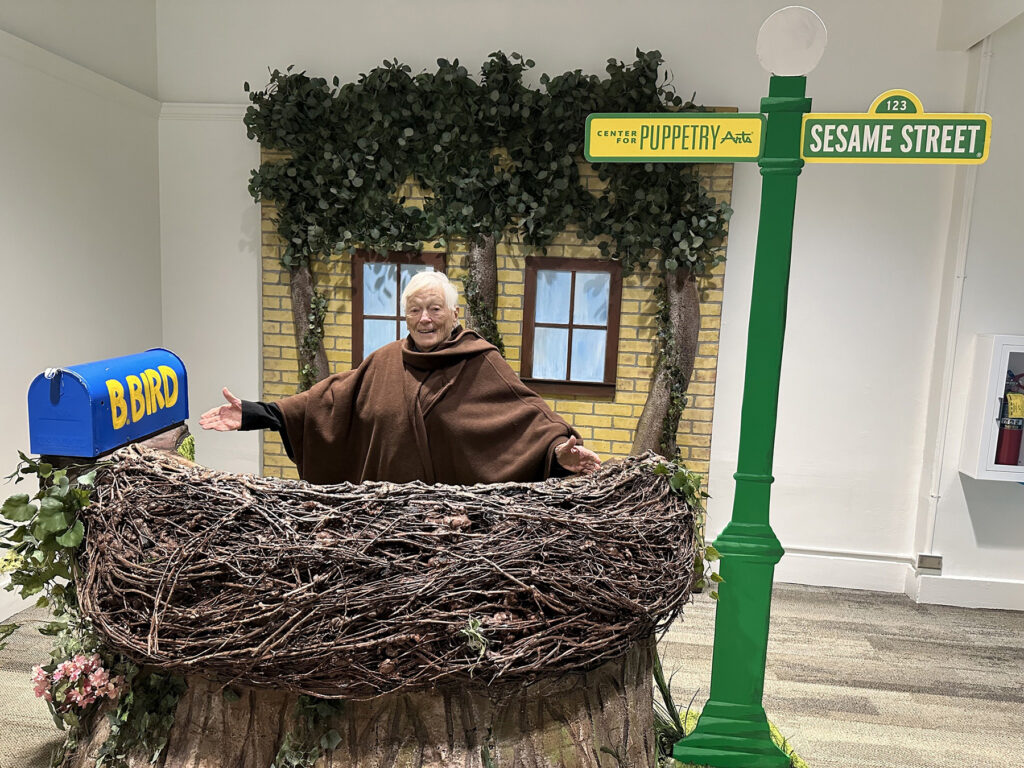
The Museum of the Center for Puppetry Arts, Atlanta, Georgia
Perhaps one of Nancy’s most important gifts to puppetry in the United States has been her work alongside founder Vincent Anthony in establishing a museum of world puppetry at the Center for Puppetry Arts in Atlanta, Georgia. The museum’s holdings initially drew on Staub’s own extensive personal collection of representative traditional and contemporary figures, begun when she started “… rescuing puppets from decorators and trash collectors” (PI 49). Nancy also acquired puppets from other collectors. “I felt I should save them for the puppet world, rather than for decorators or dilettantes” (Dircks). Shops and galleries further enriched the collection, which she displayed at her New Orleans Puppet Playhouse. “I created shows with stories and music from different cultures, so it made sense to display puppets from all over the world” (PI 49). When she left the Playhouse in 1978 in order to begin work on the 1980 World Puppetry Festival, she donated her collection of about 150 puppets to the then-new Center.
Within a few years, further acquisitions were often made possible through her personal support and friendships with artists and scholars around the world, leading to individual purchases and commissions as well as donations of both individual figures and full collections. Nancy’s initial 150 figures has since grown into a major collection of 2,415 puppets as of April of 2024. Her goal has been to represent all of the traditional puppetry forms of the world as well as the work of significant international artists. Nancy considers the ningyō jōruri or bunraku puppet theatre in Japan to be the epitome of puppet art. Her friend, Michiko Ueno-Herr, an expert on the tradition, arranged for bunraku artist and Japan Living National Treasure Kanjuro Kiritake III to come to Atlanta and donate two exquisite ningyō figures from his personal collection, along with an additional undressed third figure showing the internal body structure, and associated costume pieces and photographs. While beautiful work has been done in the creation of puppets intended exclusively as works of art, Nancy’s priority has always been to obtain functional, stage-worthy examples, preferably those that have actually been used in performance.
In 2015, a new building was built to house the Center’s growing collection. The Worlds of Puppetry Museum now includes both the Global Collection and the Jim Henson Collection, the latter a generous gift of the family of the famous performer and filmmaker. The new space meets museum standards for conservation and climate control, protecting both collections for the future. While the museum is open to the public daily, and other parts of the collection are accessible to scholars by appointment, Nancy has advocated for increased global access through online means. As the collection has increased, she has continued to stress the importance of keeping detailed records regarding the figures. “Documentation is essential. Despite the best efforts of restoration experts, puppets have a limited life span. Like people, they disintegrate.” (Staub PI 49). Nancy Staub considers the Museum her major legacy.


Research and Publication
While she continues to champion all aspects of puppetry, Nancy has made special efforts to promote greater public awareness of the range of world puppet traditions. To this end, she has served in various capacities as an officer, councilor, board, commission, and panel member of Puppeteers of America, UNIMA-USA, UNIMA International, and the Henson Foundation, as well as a site evaluator for the National Endowment for the Arts. Often called upon as a consultant, Nancy’s reputation is truly international. In 2012, she was asked to serve as a performance judge for the 21st UNIMA Congress and World Puppetry Festival in Chengdu, China. She has published her research extensively (over sixty publications!) and has been a research consultant for the Institut International de la Marionnette in Charleville-Mézières, France. Nancy has participated extensively as presenter, moderator, and organizer for puppetry-related scholarly conferences (including two Futurism conferences in 1990 and 1991). She served as one of the original five editors of UNIMA’s World Encyclopedia of Puppetry Arts (now online in French, English, and Spanish) and continued as a “scientific advisor.”
Having received many recognitions over her career, Nancy has been named an UNIMA International Member of Honor. As of 2023, The Nancy Staub Research Library at the Center for Puppetry Arts, named in her honor, contains materials in multiple languages, including thousands of books, video recordings, and associated ephemera, many of which she donated. The collection includes items going back to 1871, with most dating from 1960 forward.
In 2023, UNIMA-USA established and presented the first Nancy Staub Awards, again named in her honor, as a way to identify and reward scholars doing research in the field of puppetry. Nancy’s own extensive bibliography includes important articles that highlight a variety of aspects of puppetry that might otherwise have remained undocumented or only found in scholarly journals not intended for wider audiences. Her comparative knowledge of a range of forms (both traditional and contemporary) has allowed her to place different genres (and the larger historical, literary, and religious traditions that inform them) in wider contexts. That is an important distinction as regional specialists, concerned with narrow traditions of puppetry, often only as minor aspects of other subjects, are not always able to understand or communicate how their local forms relate to those from other areas or within the wider world of the visual and performing arts. Staub, who came from a theatre background, never loses sight of puppetry as an important performing art, even when that “performance” has ceremonial purposes. (To this end, seeking and receiving the NEA’s recognition of puppetry as a distinct art form was a significant accomplishment). The purpose of her writing is to communicate puppetry’s importance to readers in ways that are clear and accessible. While she has been especially interested in puppetry as practiced in Japan, India, and by Native Americans, writing essays on each, she continually strives to increase her knowledge on all aspects of puppetry, including contemporary practice. Her several articles on Julie Taymor in The Puppetry Yearbook (whom she invited to the 1980 DC festival, long before Taymor’s later fame), were among the first in print recognizing the talent of this exceptional artist.
As Steve Abrams observed, “The work of Nancy Lohman Staub has raised the standard and consciousness of puppetry in the United States and abroad. Puppeteers on every continent value her friendship, her curiosity, her quiet optimism and keen intelligence” (Jurkowski 656). Nancy is a beloved figure, but not only for her knowledge and promotion of international puppet theatre. Her wit, kindness, and generosity, along with her encyclopedic knowledge and passion for world puppetry—and the world in general!—has earned her the highest respect from those who know her work as well as the affection of those who know her personally (the latter certainly at least partially elicited by her considerable southern charm). She has an extraordinary gift for connecting people with each other, leading to amazing collaborative projects that would not exist otherwise. Her article on the 1980 Washington, DC festival is a fascinating record of how individuals can come together to undertake impossible tasks when complex personal connections, inspired by the right person, can extend across organizational barriers and international borders.
In my own case, her support led to my involvement with the expansion of the Center for Puppetry Arts’ museum. Our conversations over the years have helped me understand what puppetry has meant to us both. We have agreed that the stories behind the puppets go far beyond the significance of the figures themselves. Nancy’s eternally inquiring mind finds that puppetry offers a rich bounty of intellectual and aesthetic wealth. Despite seeming like an area of narrow interest to the uninitiated, the multi-faceted world of puppetry is as vast as that of any art form, and far more extensive than many. Puppet theatre tells stories, both personal and part of shared experience, both small and epic in scale. For Nancy, puppetry is a natural entry point to the thoughts, concerns, humor, and aesthetic sensibilities of their makers, performers, and audiences. Much as she admires the artistry and craftsmanship of the puppet figures in the collection she founded, they are not simply objects to her. Nancy has taught me that there will always be more riches to uncover, and an obligation to share them as widely as possible. “There is virtually no culture without some form of puppetry. The historical significance of a particular tradition or artist is always a consideration. The ultimate goal is to demonstrate the universality underlying the diversity of puppetry and, through it, of humanity itself.” (Dircks 74).
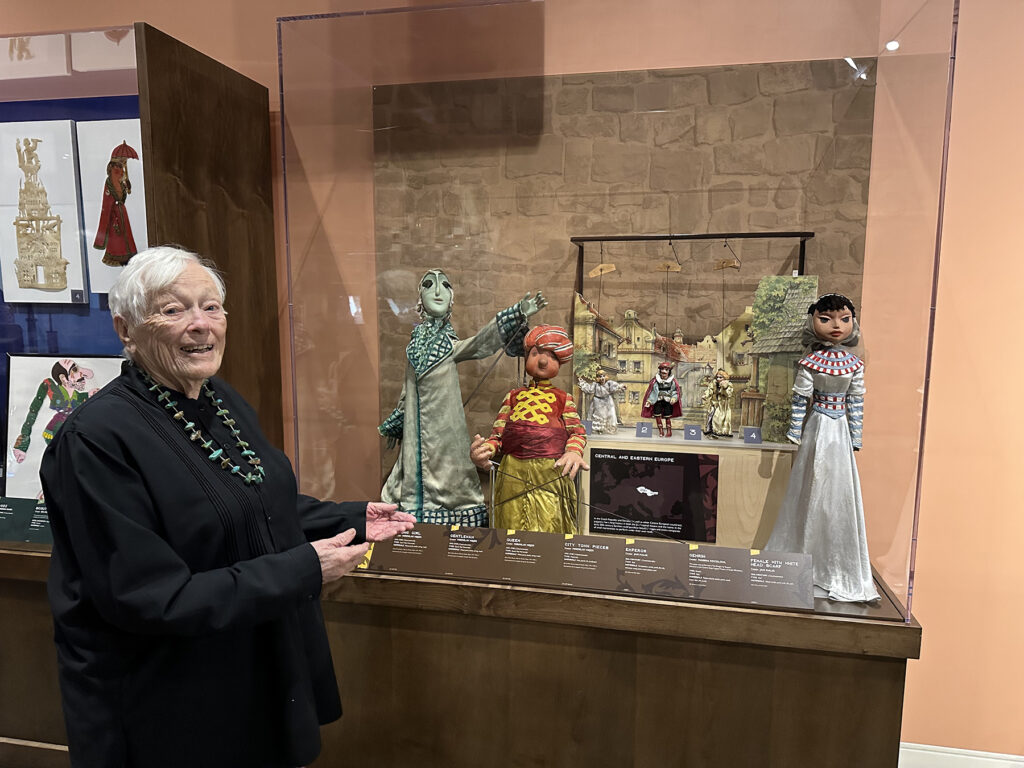
References
Asch, Leslee. 2020. Out of the Shadows. Old Greenwich, CT: Inform Press.
Louis, Alan. 2009. “Interview with Nancy Staub and Allelu Kurten, 7/21/2009.” DVD.
Smith, Athena. 2015. “Nancy Lohman Staub Collection Finding Aid.” Atlanta: Center for Puppetry Arts.
Staub, Nancy L. 1990. “Bunraku: A Contemporary Western Fascination.” In Kominz, Laurence R. and Mark Levinson, eds., The Language of the Puppet: 47-52. Vancouver, WA: Pacific Puppetry Center Press.
______, and Angela Benefield (ed.) et al. 1990. Futurism Conference Report. Atlanta: Center for Puppetry Arts.
______. 1996. “Ancient Greek Theatre, Noh, Bunraku, and Craig.” The Puppetry Yearbook Volume Two, edited by James Fisher, 21-29. Lewiston, NY: Edwin Mellen.
______. 1996. “Music in Movement: The Collaboration of Julie Taymor and Elliot Goldenthal.” The Puppetry Yearbook Volume Two, edited by James Fisher, 165-73. Lewiston, NY: Edwin Mellen.
______. 1997. “Besides Bunraku: The Incredible Variety of Japanese Puppetry.” The Puppetry Yearbook Volume Three, edited by James Fisher, 21-40. Lewiston, NY: Edwin Mellen.
______. 2000. “The Masks and Puppets of Julie Taymor: Spiritual Fictions.” The Puppetry Yearbook Volume Four, edited by James Fisher, 179-88. Lewiston, NY: Edwin Mellen.
______. 2002. “Craig’s Vision Realized: Julie Taymor’s The Lion King.” The Puppetry Yearbook Volume Five, edited by James Fisher, 139-47. Lewiston, NY: Edwin Mellen.
______. 2004. “The Center for Puppetry Arts Museum Collection.” In American Puppetry, edited by Phyllis T. Dircks, 73-86. Jefferson, NC: McFarland.
______. 2005. “Puppetry of India and the Americans.” The Puppetry Yearbook Volume Six, 209-29. Lewiston, NY: Edwin Mellen.
______. 2005. “International Significance of Ningyō Jōruri Bunraku.” The Puppetry Yearbook Volume Six, 231-38. Lewiston, NY: Edwin Mellen.
______. 2007. “Karagöz & Karagiozis in America.” The Puppetry Journal 58, no. 3: 28-31.
______. 2009. “Amerindiennes et Inuit.” Encyclopédie mondiale des arts de la marionnette, edited by Henryk Jurkowski and Thieri Foulc, 46-49. Montpellier: Editions L’Entretemps et UNIMA.
______. 2010. “Native American Puppetry.” Puppetry International 28: 42-45.
______. 2014. “Once in a Lifetime – The 1980 World Puppetry Festival.” The Puppetry Journal 65, no. 3: 2-10.
______, and Steve Abrams. 2015. “The Henson Family: A Steadfast Support of Puppetry for 50 Years and More.” The Puppetry Journal 66, no. 3: 20-25.
______. 2015. “A Very Grand Opening for the Worlds of Puppetry Museum at the Center for Puppetry Arts (CPA).” The Puppetry Journal 67, no. 1: 19-22.
______. 2017. International Message of Nancy Lohman Staub – 21st March 2017.
https://www.unima.org/en/projects-and-achievements/world-puppetry-day/nancy-lohman-staub-2017/, accessed 3 May 2024.
______. 2017. “The African Collection, Center for Puppetry Arts Museum.” Puppetry International 41: 40-43.
______. 2019. “UNIMA Heritage Commission.” Puppetry International 45: 8-9.
______. 2021. Center for Puppetry Arts Museum Global Collection. Puppetry International 49: 10-11, 48.
______. 2023. “Favorite Accomplishments.” Personal email to Bradford Clark, 1 October 2023..
Stoessner, Jennifer. 2008. “Building American Puppetry on the Jim Henson Foundation.” PhD Dissertation, Ohio State University.

